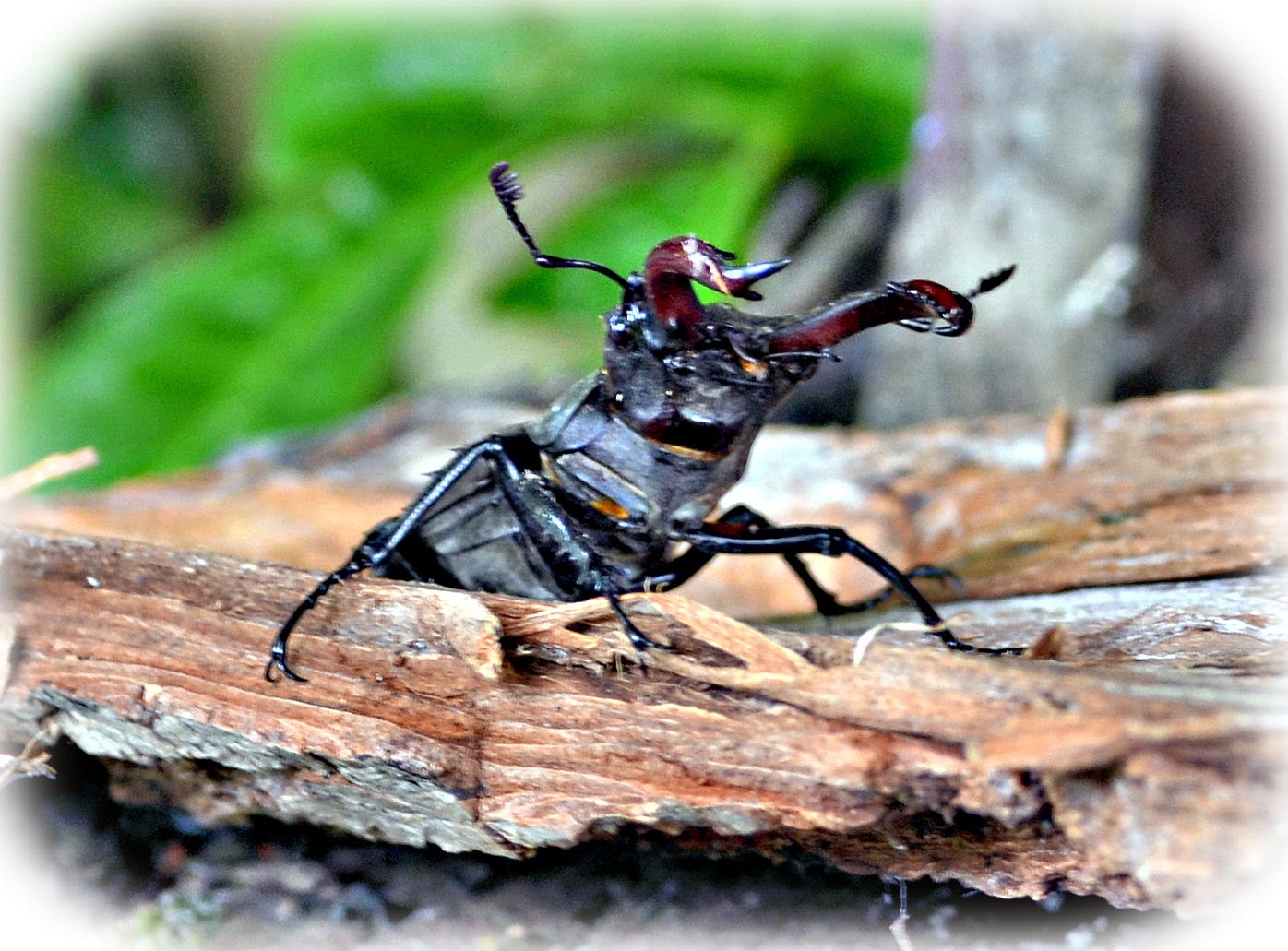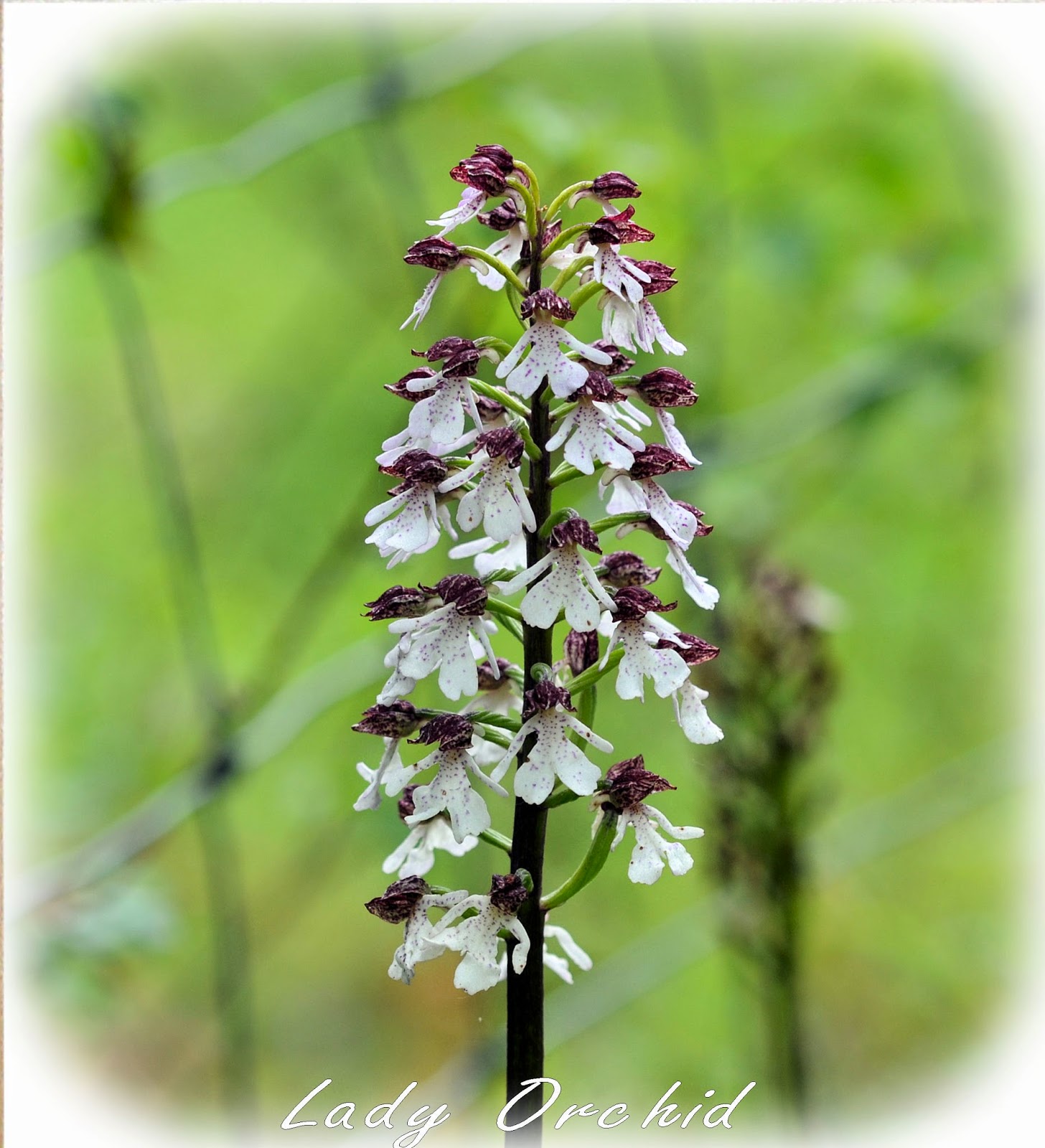A walk around the high meadows of Lullingstone country park revealed a beautiful vista of wild flowers.
The Pyramidal Orchids & Oxeye daisies putting on a fine display.
The sky was a brilliant Blue and the warm sunshine encouraged the Butterflies to reveal themselves.
And there lies the problem, as the morning warms up, the butterflies are very active, hardly settling at all, and very frustrating when you are trying to get a decent photograph.
As I lined up a Large Skipper to Photograph, from the corner of my eye, I caught sight of a large orangey Butterfly, a Comma I thought, as it landed several feet away from me on a Pyramidal Orchid.
I took the photograph of the Large Skipper.
As I glanced again at the would be Comma Butterfly, it suddenly hit me, those wings were not scalloped or ragged looking,
and as the wings slowly closed, revealing the underside,
a greenish wash with large white spots........
Then in that eureka moment as I realised for the first time, that I was looking at a Dark Green Fritillary, it was off, disappearing across the meadow as I fumbled around with the camera in a blind panic to get a photograph.
I spent the next hour walking around the meadow, kicking myself for wasting the opportunity, searching for that butterfly, there had to be more than one I reckoned, and I wanted a photograph, I did see a couple more flyovers, but nothing close.
It struck me how luminous orange they appeared as
they fluttered across the meadow always distant,
I knew now what to look for, but where.
I thought I would walk down to the Orchid Bank,
to try my luck there.
A good move, because as I approached the Orchid bank, the lower slopes were alive with Butterflies, and there they were,
Dark Green Fritillaries everywhere.
The initial problem here, was that they just did not to settle, I was getting good views, but not long enough to take a photograph.
Who said "You can't teach an old dog, new tricks"
I noticed in the rough grass at the bottom of the Orchid bank a large patch of Knapweed, possibly Greater Knapweed, and all in flower.
So I positioned myself next to the Knapweed and waited.
 |
| Dark Green Fritillary on Greater Knapweed. |
 |
| Dark Green Fritillary & Meadow Brown |
 |
| Dark Green Fritillary & male Small Skipper |
 |
| Small Skipper |
 |
| Marbled White |
 |
| Marbled White |
 |
| Common Blue |
Some good field craft learnt here, look for some Knapweed,
Don't chase the Butterflies, let them come to you.
Don't chase the Butterflies, let them come to you.
Knapweed both 'Common' and 'Greater' are particularly attractive nectar source to Bees and Butterflies,
and as they go to seed, the birds will feed on them,
looks like a good wild flower for the garden.













































